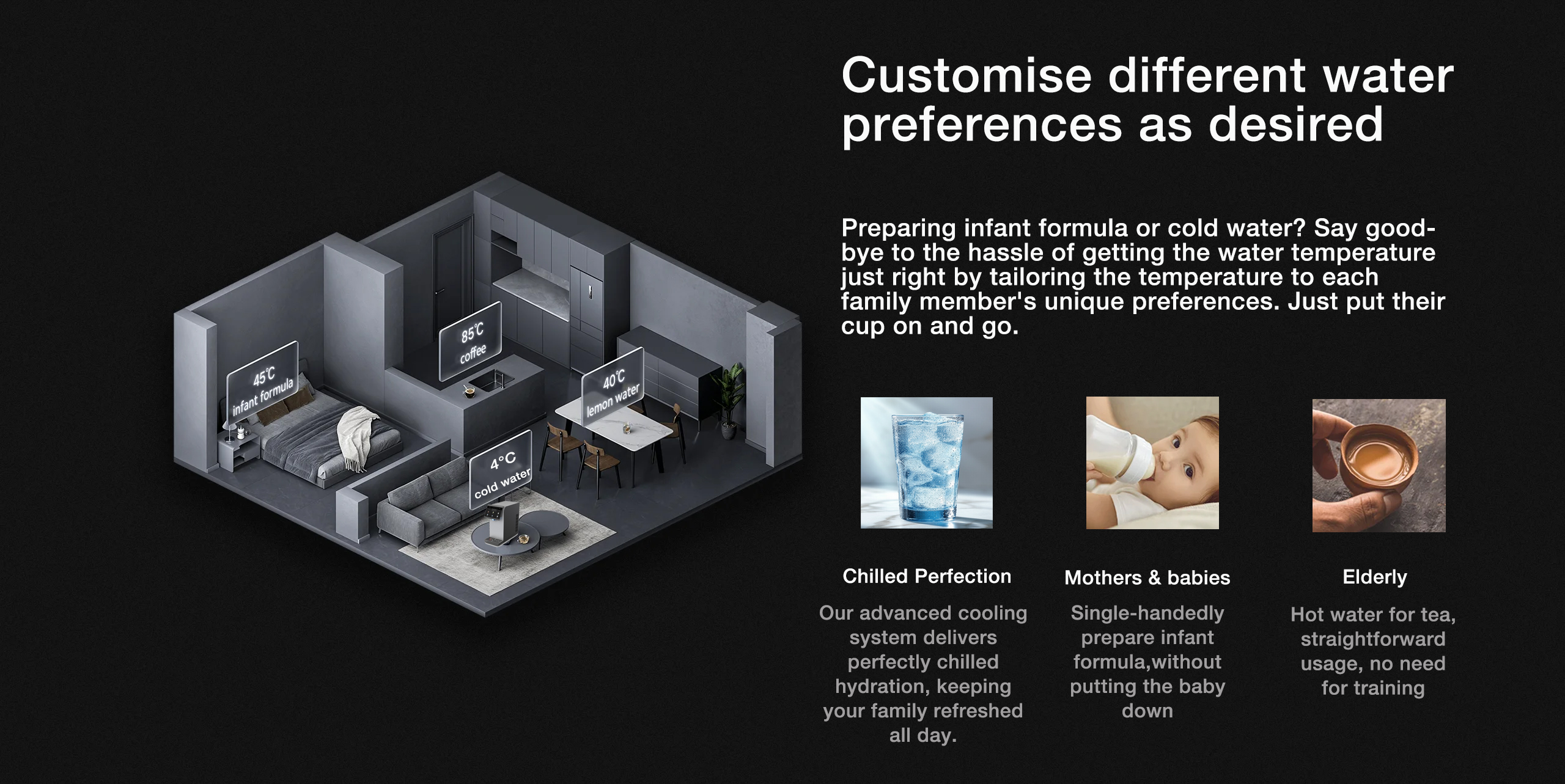 Introduction
Introduction
The water dispenser market, once dominated by generic office coolers, is now fragmenting into specialized niches driven by technological innovation and sector-specific demands. From hospitals requiring sterile hydration to schools prioritizing child-safe designs, the industry is expanding its reach while embracing cutting-edge solutions. This blog uncovers how niche markets and emerging technologies are pushing water dispensers into uncharted territory, creating opportunities far beyond traditional use cases.
Sector-Specific Solutions: Meeting Unique Needs
1. Healthcare Hygiene
Hospitals and clinics demand dispensers with medical-grade sterilization. Brands like Elkay now offer units featuring:
TUV-Certified UV-C Light: Eliminates 99.99% of pathogens, critical for immunocompromised patients.
Tamper-Proof Designs: Prevents contamination in high-risk environments.
The global medical water dispenser market is projected to grow at 9.2% CAGR through 2028 (Facts & Factors).
2. Education Sector
Schools and universities prioritize:
Vandal-Resistant Builds: Durable, anti-tamper units for dormitories and public areas.
Educational Dashboards: Dispensers with screens tracking water savings to teach sustainability.
In 2023, California’s Green School Initiative installed 500+ smart dispensers to reduce plastic bottle use by 40%.
3. Hospitality Innovation
Hotels and cruise lines deploy dispensers as premium amenities:
Infused Water Stations: Cucumber, lemon, or mint cartridges for spa-like experiences.
QR Code Integration: Guests scan to learn about filtration processes and sustainability efforts.
Breakthrough Technologies Reshaping the Industry
Nanotechnology Filtration: Graphene-based filters (pioneered by LG) remove microplastics and pharmaceuticals, addressing emerging contaminants.
Blockchain Traceability: Companies like Spring Aqua use blockchain to log filter changes and water quality data, ensuring transparency for corporate clients.
Self-Powered Dispensers: Kinetic energy harvesters convert button presses into power, ideal for off-grid locations.
The B2B Boom: Corporate Strategies Driving Adoption
Businesses are adopting water dispensers as part of ESG (Environmental, Social, Governance) commitments:
LEED Certification Compliance: Bottleless dispensers contribute to green building points.
Employee Wellness Programs: Companies like Siemens report 25% fewer sick days after installing vitamin-enriched water systems.
Predictive Analytics: IoT-connected dispensers in offices analyze peak usage times, optimizing energy and maintenance costs.
Challenges in a Diversifying Market
Regulatory Fragmentation: Medical-grade dispensers face strict FDA approvals, while residential models navigate varying regional eco-certifications.
Tech Overload: Smaller businesses struggle to justify costs for advanced features like AI or blockchain.
Cultural Adaptation: Middle Eastern markets prefer dispensers with Quranic verse engravings, requiring localized design flexibility.
Regional Deep Dive: Emerging Hotspots
Scandinavia: Carbon-neutral dispensers powered by renewable energy thrive in eco-conscious Sweden and Norway.
India: Government schemes like Jal Jeevan Mission drive rural adoption of solar-powered community dispensers.
Australia: Drought-prone regions invest in atmospheric water generators (AWGs) that extract humidity from air.
Future Forecast: 2025–2030
Pharma Partnerships: Dispensers dispensing electrolyte mixes or vitamins in partnership with health brands (e.g., Gatorade collabs).
AR Maintenance Guides: Augmented reality glasses guide users through filter changes via real-time visual prompts.
Climate-Adaptive Models: Dispensers that adjust filtration based on local water quality data (e.g., flood-induced contamination).
Conclusion
The water dispenser market is splintering into a constellation of micro-markets, each demanding tailored solutions. From life-saving medical units to luxury hotel amenities, the industry’s future lies in its ability to innovate for specificity. As technology bridges the gap between universal access and personalized demand, water dispensers will quietly revolutionize how we think about hydration—one niche at a time.
Stay thirsty for innovation.
Post time: May-06-2025

